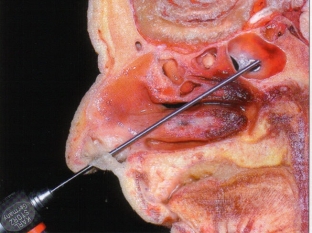When it comes to the inflammatory process of the sinuses, the first thing that comes to mind is sinusitis or, for example, frontal sinusitis. Few people will remember the inflammation of the so-called "dumb" sinus, lost deep in the cranial cavity. But it is sphenoiditis – inflammation of the sphenoid sinus, can be disguised as a clinical picture of the inflammatory process of other sinuses and remain untreated for a long time, provoking & nbsp; the development of serious complications. In most cases, sphenoiditis is a consequence of sinusitis, frontal sinusitis or ethmoiditis and proceeds in parallel with these diseases. About the characteristic symptoms and treatment of sphenoiditis tells estet-portal.com.
Characteristic symptoms of inflammation of the sphenoid sinus
The clinical picture of sphenoiditis is very often blurred, since sphenoiditis often occurs against the background of the inflammatory process of other nasal sinuses. However, there are also specific "sphenoidal" symptoms that are highly likely to indicate the presence of an inflammatory process in the sphenoid sinus:
- headache of varying severity in the depths of the head or in the back of the head, in the orbit or in the temple or crown of the head;
- drainage of pus along the posterior wall of the pharynx, visible during pharyngoscopy, which is characteristic of chronic or acute purulent form of sphenoiditis;
- permanent sensation of an unpleasant odor;
- feeling of nasal congestion;
- deterioration of nasal breathing;
- the presence of viscous discharge in the nasopharynx, as well as crusts in the nasal cavity, which are difficult to remove.
Basic methods for diagnosing acute and chronic sphenoiditis
Diagnosis of sphenoiditis is a rather complicated process, since inflammation of the sphenoid sinus tends to mask or proceed against the background of the disease of other sinuses. In this regard, it is quite difficult to suspect sphenoiditis. Speech about inflammation of the sphenoid sinus comes when the characteristic symptoms of sphenoiditis appear. The most informative diagnostic method for this disease is computed tomography and magnetic resonance imaging, which can be used to assess the condition of the sphenoid sinus. For diagnostic purposes, probing and puncture of the sphenoid sinus is also performed, but & nbsp; such a procedure is a rather delicate work and requires a highly qualified specialist. The use of endoscopes greatly helps to facilitate the diagnostic process of sphenoiditis.
Conservative and surgical treatment of sphenoiditis
In acute sphenoiditis, the use of conservative methods of treatment is recommended. The patient is prescribed general therapy with antibacterial, antihistamine and analgesic drugs, as well as local treatment of the inflammatory process, in order to eliminate edema and restore the outflow of the contents of the sphenoid sinus. If the disease continues for more than two weeks – probing and lavage of the sphenoid sinus is recommended. When the first signs of the development of complications of sphenoiditis appear, the patient is required to undergo surgical treatment. To date, the most effective surgical intervention on the sphenoid sinus with sphenoiditis is the endoscopic endonasal method.








Add a comment